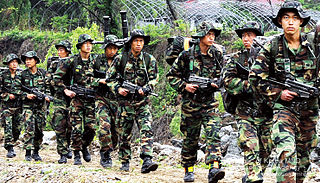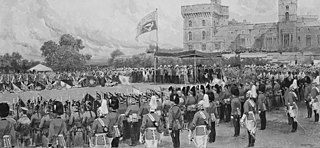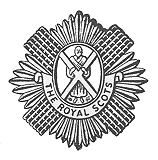
The 8th Infantry Division was an infantry division of the British Army that was active in both the First and Second World Wars. The division was first formed in October 1914 during the First World War, initially consisting mainly of soldiers of the Regular Army and served on the Western Front throughout the war, sustaining many casualties, before disbandment in 1919. The division was reactivated in Palestine, under the command of Major-General Bernard Montgomery, in the late 1930s in the years running up to the Second World War before being disbanded in late February 1940. It was briefly reformed in Syria in an administrative role during 1942-3.

The 58th Division was an infantry division created in 1915 as part of the massive expansion of the British Army during World War I. It was a 2nd Line Territorial Force formation raised as a duplicate of the 56th Division. After training in Britain, the division joined the British Expeditionary Force (BEF) on the Western Front in 1917. It saw action at the battles of Arras and Passchedaele in 1917 and the German Spring Offensive in 1918. It then took part in the Battle of Amiens and the final Allied Hundred Days Offensive of the war. The division was recreated during World War II as an imaginary 'deception' formation.

The 156th Brigade was an infantry brigade formation of the British Army. The brigade saw active service in both World War I and World War II with the 52nd (Lowland) Division.
The 65th Division of the British Army was a second-line Territorial Force division, formed in 1914, which served on home defence duties during the First World War.
The 214th Brigade was an infantry formation of the British Army during World War I. It was raised as a second line brigade of the Territorial Force and initially assigned to the 71st Division for coast defence. Later it was reorganised as an all-arms brigade group for service in North Russia, but this was cancelled and it was reassigned to the 67th Division, a training and home defence formation, until the end of the war.
The 206th Brigade was a formation of the British Army during World War I. It was raised as a 2nd-Line duplicate of the Essex Brigade of the Territorial Force and formed part of the 69th Division. It served as a training formation in the United Kingdom without going overseas.
The 207th Brigade was a formation of the British Army during World War I. It was raised as a 2nd-Line duplicate of the 162nd Brigade of the Territorial Force and formed part of the 69th Division. It served as a training formation in the United Kingdom without going overseas.
The 120th Brigade was an infantry brigade formation of the British Army during World War I. Part of Lord Kitchener's 'New Armies', it served in the 40th Division on the Western Front. In 1918 it was reorganised as the 120th (Highland) Brigade. The brigade number was reactivated for deception purposes during World War II.
The 121st Brigade was an infantry brigade formation of the British Army during World War I. Part of Lord Kitchener's 'New Armies', it served in the 40th Division on the Western Front. The brigade number was reactivated for deception purposes during World War II.
The 196th Brigade was an infantry brigade of the British Army raised during the Great War in 1914. The brigade was formed as a 2nd Line of the 157th Brigade and assigned to the 65th Division, itself formed as a 2nd Line of the 52nd (Lowland) Division. The brigade was composed of four 2nd Line battalions of the Highland Light Infantry and remained in the United Kingdom throughout the war.

The 226th Infantry Brigade was a Home Service formation of the British Army that existed under various short-lived titles in both the First and Second World Wars.
221st Mixed Brigade was a Scottish Home Service formation of the British Army that served under various titles throughout World War I.
71st Division was a short-lived infantry division of the British Army during the First World War. It served in the Home Defence forces and never went overseas.
73rd Division was a short-lived infantry division of the British Army during World War I. It served in Home Forces and never went overseas.
The 194th Brigade was an infantry brigade of the British Army, raised during World War I. The brigade was part of the Territorial Force and formed as a 2nd Line duplicate of the 155th Brigade. Assigned to the 65th Division, the brigade remained in the United Kingdom throughout the war.
The Glasgow Brigade was an infantry formation of Britain's Volunteer Force from 1890 to 1902. It was the forerunner of two formations of the Territorial Force that saw service in both World Wars.
The 1st Lanarkshire Rifle Volunteers was a Scottish Volunteer unit of the British Army. Originally raised in Glasgow from 1859, it later became a battalion of the Cameronians. During World War I it served on the Western Front and in Ireland. Converted into an anti-aircraft regiment just before World War II, it served during The Blitz and in the campaign in North West Europe, and continued in air defence role in the postwar years until 1955.










